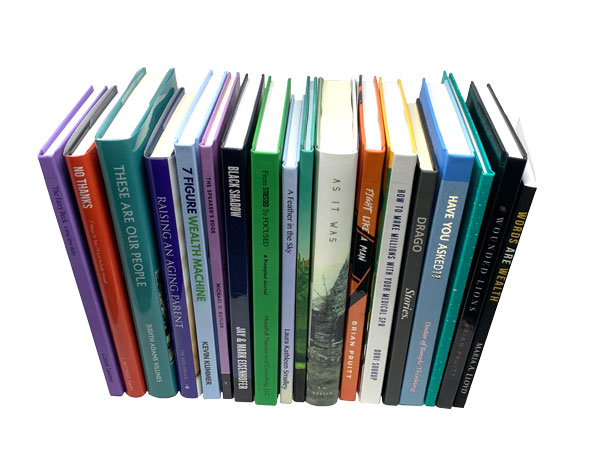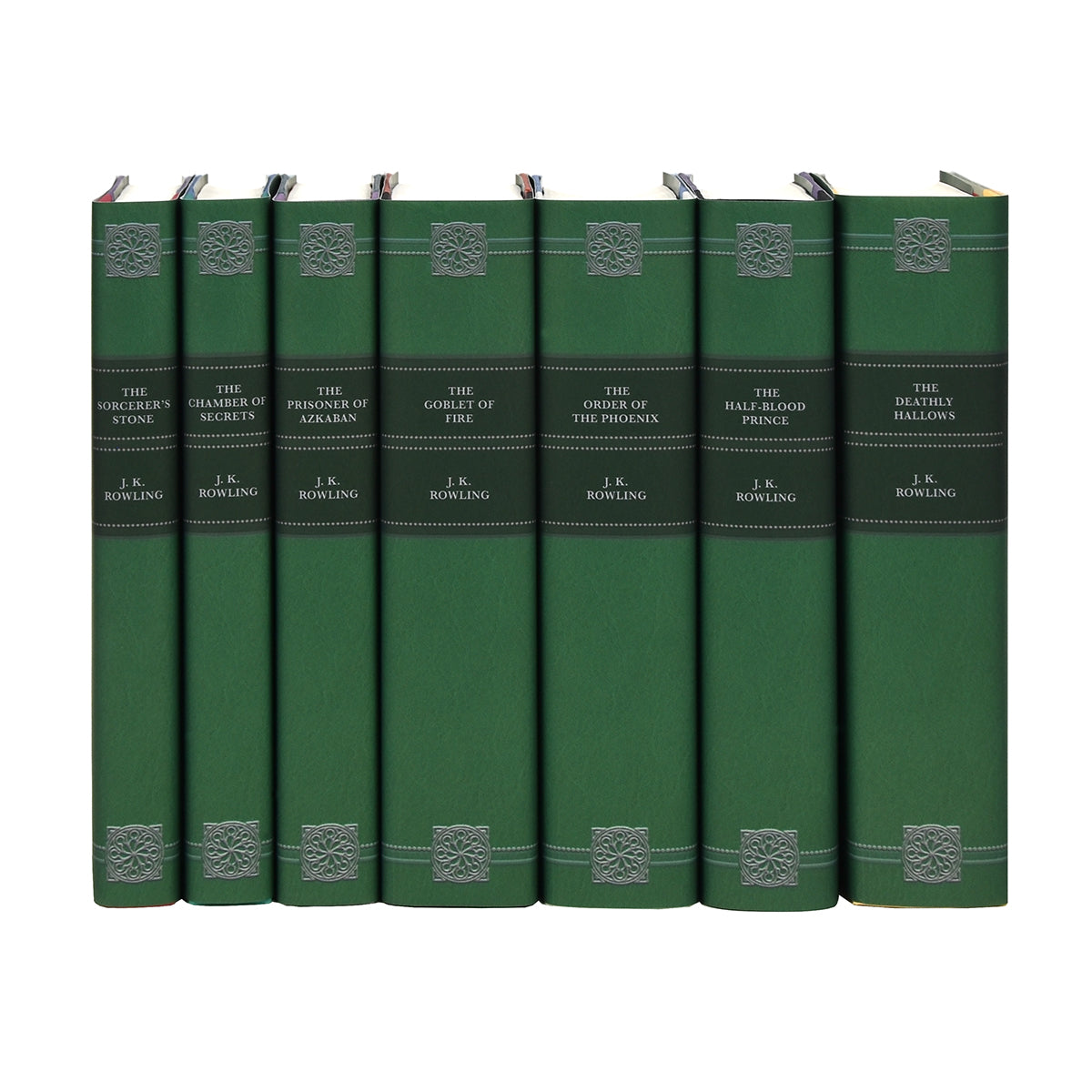Collectible Hardcover Books Every Reader Should Own
Collectible Hardcover Books Every Reader Should Own
Blog Article
A Comprehensive Overview to the Process of Hardcover Books Printing
When you begin the trip of hardcover publication printing, recognizing the whole process is crucial. From preparing your manuscript to choosing the right products, each step plays an important role in the end product. You'll require to consider style elements and printing strategies that suit your vision. As you navigate with binding and high quality control, you'll locate that every choice influences guide's overall allure. So, what comes next off in this detailed process?
Comprehending the Hardcover Book Structure
When you check out the globe of hardbound books, you'll promptly discover that their framework is distinctive and deliberate. You'll locate a textile or natural leather treatment, which not just improves visual appeals yet also includes to the book's durability.
The message block itself is composed of several signatures, or folded sheets, stitched with each other for strength. You'll see that the back is reinforced, enabling a smooth lay-flat reading experience - hardcover books. Additionally, guide's weight frequently shares a sense of top quality and durability
Hardcover publications typically feature a dust jacket, which acts as a marketing tool while protecting the cover. Recognizing these elements assists you appreciate the craftsmanship behind hardbound books and their one-of-a-kind allure in the literary globe.
Manuscript Preparation and Editing And Enhancing
Getting your manuscript prepared for printing is vital, and it begins with correct formatting guidelines. You'll need to recognize the modifying procedure to improve your job and guarantee it reverberates with visitors. Plus, understanding proofreading methods can aid you capture those pesky errors prior to your publication mosts likely to print.

Manuscript Formatting Guidelines
Correct manuscript formatting is essential for developing a professional-looking hardcover book. Begin by selecting a standard font style like Times New Roman or Arial in 12-point size. Usage double-spacing throughout the file to enhance readability. Set your margins to 1 inch on all sides, offering your text area to take a breath. Number your web pages in the leading right edge, and include your phase titles at the start of each new area. Usage clear headings to indicate sections, and avoid too much format like vibrant or italics unless necessary. Make certain to proofread your manuscript for uniformity in vogue, ensuring that everything from spelling to spacing complies with your picked standards. Adhering to these steps will certainly set a strong structure for your publication.
Editing Process Fundamentals
Editing your manuscript is an essential action that can change it from a rough draft into a refined last item. Beginning by checking out your job seriously, concentrating on quality, framework, and flow. Search for variances in your narrative, character development, or argumentation. It's practical to take breaks in between rounds of modifying to acquire fresh point of views. Don't think twice to reduce unneeded content or rephrase awkward sentences; this will certainly enhance readability. Consider seeking responses from trusted peers or professional editors who can offer valuable understandings. Bear in mind, modifying isn't almost fixing errors; it has to do with refining your voice and ensuring your message reverberates with readers. Welcome the procedure, and you'll see your manuscript luster.
Proofreading Strategies Summary
When you have actually polished your manuscript via editing and enhancing, the following action is to ensure it's totally free of errors that could distract viewers. Review your manuscript out loud-- this assists you listen to unpleasant phrasing and spot typos. Think about printing your manuscript; analysis on paper can disclose errors that displays miss.
Designing guide Cover and Inside
When you're making your publication cover and inside, you'll intend to concentrate on crucial style components that capture your target market's interest. Picking the appropriate typography styles and meticulously selecting colors and images can make all the distinction in conveying your book's motif. Allow's explore how these choices can boost your work and draw in readers.
Vital Design Elements
Producing an eye-catching book cover and a well-designed inside is vital for bring in readers and improving their experience. Begin with the cover; it's your impression. Select shades and pictures that reflect your book's style and mood. Ensure your title stands apart and is clear, also in thumbnail size.
A tidy, well organized layout helps readers navigate effortlessly. Bear in mind, a natural style throughout your book cultivates a specialist appearance that can substantially affect a viewers's decision to choose it up.
Selecting Typography Designs
Typography plays an essential duty in both the publication cover and interior decoration, forming how viewers perceive your material. When picking typography designs, consider your publication's category and target market. A timeless serif typeface might work well for literary fiction, while a modern-day sans-serif might suit a contemporary story. Assurance readability; your message must be easy on the eyes, specifically for longer flows. Take note of font dimension and line spacing, as these components affect general flow. Mixing fonts can add rate of interest, however limit it to 2 or 3 to maintain comprehensibility. Finally, think of power structure-- utilize different designs for headings and body text to assist readers effortlessly via your work. Your typography choices will substantially affect the visitor's experience.
Shade and Images Selection
Selecting the ideal shades and images is essential for recording readers' interest and sharing your publication's themes. Start by considering your category; lively colors might help a youngsters's publication, while muted tones match a mystery book. hardcover books. Use images that reverberates with your material-- pictures, illustrations, or abstract designs can improve your message
Think concerning the feelings you wish to evoke. Warm shades can develop enjoyment, while awesome colors usually convey calmness. When creating the cover, ensure the imagery does not bewilder the title and writer's name; clearness is vital. Inside, utilize constant shade systems that match your typography. This natural approach not only boosts your publication's aesthetic however additionally improves the reader's experience, making it more remarkable.
Picking the Right Paper and Materials
When picking paper and materials for your hardbound book, it's important to ponder exactly how they'll affect the overall feel and look of your project. Start by selecting the ideal paper weight; much heavier supply often conveys top quality and toughness, while lighter paper can develop a more delicate touch. Take into consideration the finish as well; glossy paper boosts colors and photos, while matte can offer an innovative, underrated look.
Do not fail to remember regarding the cover materials. Cloth, natural leather, or published paper can set the tone for your book. If your job includes pictures, choose acid-free paper to avoid yellowing over time. Additionally, consider the binding materials; utilizing top quality sticky assurances your publication lasts.
Inevitably, the selections you make here mirror your vision, so put in the time to sample various materials (hardcover books). Your selections will assist develop a publication that's not just visually enticing yet also durable and useful
The Printing Process: Methods and Technologies
A range of printing methods and modern technologies can bring your hardbound publication to life, each offering unique benefits. Digital printing is a prominent option for short runs, permitting quick turnaround and affordable services. It's perfect when you need to print smaller quantities without giving up high quality. On the other hand, countered printing excels in producing large volumes, supplying high-quality and consistent outcomes. This method is ideal for substantial publications where shade see page accuracy and great information issue.
Comprehending these strategies helps you make informed choices, ensuring your hardbound book not only looks fantastic but additionally meets your manufacturing requires effectively. Select the right technique to raise your publication's charm and influence.
Binding Techniques for Hardcover Books
A number of binding methods can transform your hardbound publication into a durable and appealing product. One prominent choice is the situation binding method, where the web pages are stitched together and after that affixed to a stiff cover. This supplies exceptional resilience and a specialist appearance. Another technique is the perfect binding, which makes use of adhesive to hold the pages with each other, permitting for a sleek spinal column yet less resilience compared to instance binding.
You may also consider spiral binding, which allows your publication to lay flat, making it excellent for guidebooks or workbooks. Each binding technique has its advantages and fits various needs, so believe concerning your publication's objective and target market when picking the best option for your project.
Top Quality Control and Last Touches
After selecting the right binding method for your hardcover publication, top quality control becomes crucial to validate your last product fulfills your assumptions. Begin by inspecting the published web pages for any mistakes or incongruities in shade and layout. You don't wish to miss out on any type of typos or misprints Going Here that might affect your readers' experience.
Next, examine the binding stability. Confirm the web pages are safely attached which the spine is durable. A well-bound book not only looks expert but likewise feels resilient in your hands.
Furthermore, focus on the cover. Look for any scuff marks or imbalances in the art work. Make certain they're applied continually across all duplicates. if you have actually decided for special coatings like embossing or aluminum foil marking.
Ultimately, conduct a comprehensive assessment of the entire set prior to relocating to distribution. This method, you can validate that every book mirrors your high criteria.
Frequently Asked Concerns
How Lengthy Does the Hardcover Book Printing Process Usually Take?

What Is the Minimum Order Amount for Hardbound Books?
The minimum order quantity for hardcover books generally begin around 100 duplicates, but it can vary based on the printer. You ought to check with your selected printing solution for their details demands and pricing.

Can I Print Hardbound Books in Personalized Sizes?
Yes, you can publish hardcover books in customized dimensions. Numerous printing services offer versatility with measurements, permitting you to select a format that matches your job. Just verify the requirements prior to putting your order.
Are There Eco-Friendly Options for Hardcover Book Printing?
Yes, you can locate green choices for hardbound book printing. Numerous business use sustainable inks and recycled products. Just ask your printer about their eco-friendly techniques to ensure your task straightens with your environmental worths.
What Are the Costs Related To Hardcover Publication Printing?
When thinking about hardcover publication printing prices, you'll need to consider products, design, and printing techniques. Extra expenses like delivery and binding can additionally influence your total budget plan, so plan accordingly for your task.
When you commence the journey of hardbound book printing, recognizing the whole process is crucial.A range of printing methods and innovations can bring your hardcover book to life, each offering one-of-a-kind advantages. Just how Lengthy Does the Hardcover Book Printing Process Generally Take?
The hardcover book printing procedure normally takes about 2 to 6 weeks.Yes, you can find out discover green options for hardcover book printing.
Report this page